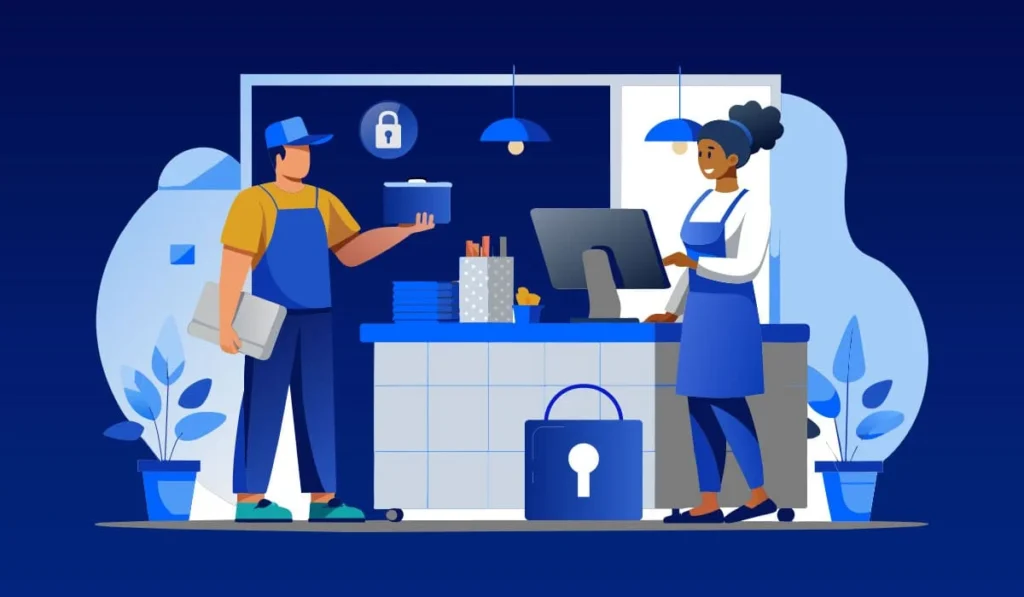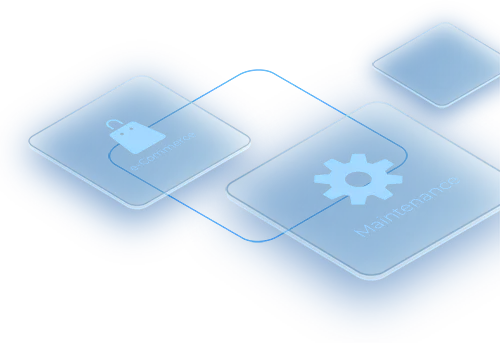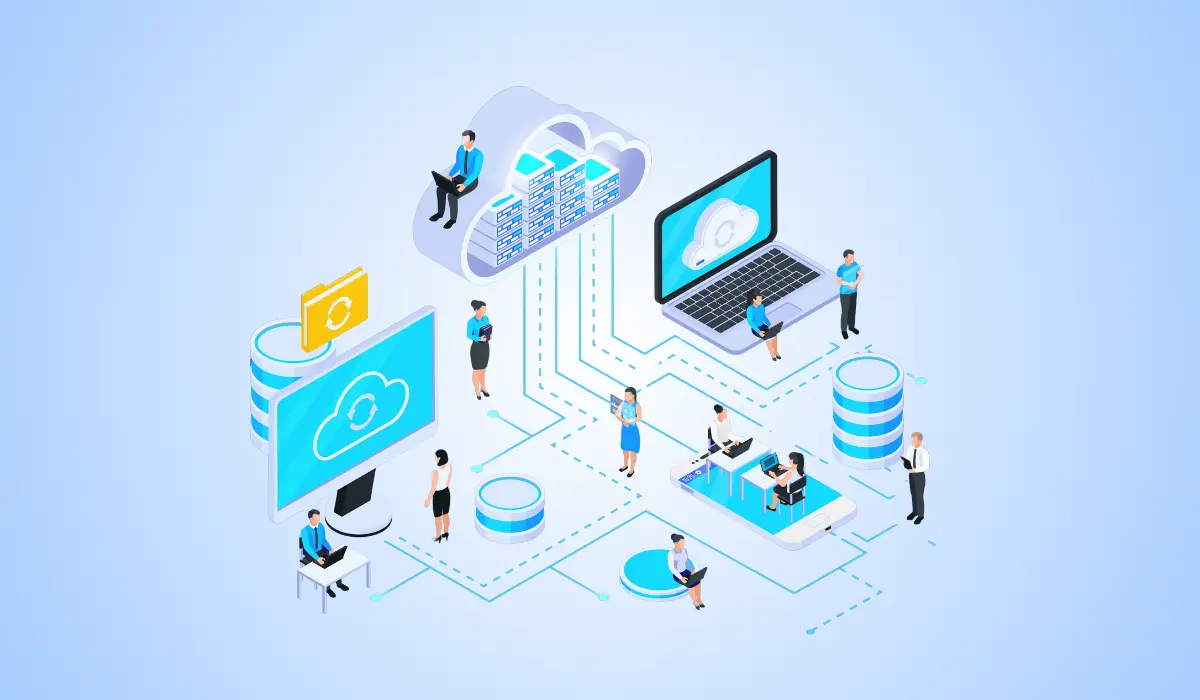
Essential POS Security for Protecting Your Restaurant’s Data and Transactions

Essential POS Security for Protecting Your Restaurant’s Data and Transactions
In the fast-paced environment of the restaurant industry, technology plays a major role in streamlining operations and improving customer service.
A Point of Sale (POS) system is the heartbeat of any restaurant, handling everything from order processing to payment transactions.
However, as essential as these systems are, they are also vulnerable to various security threats.
This guide will explore the intricacies of Restaurant POS Security and the types of threats that can compromise these systems.
You will also get an idea on the measures that you can take to ensure your restaurant’s POS remains robust and secure.
Content Index
- What Is a POS System in a Restaurant?
- What Is POS Security?
- General POS Security Threats
- How to Ensure Security Of Your Restaurant POS
- Conclusion

What Is a POS System in a Restaurant?
A restaurant’s point-of-sale (POS) system is a networked system that tracks and records sales.
It typically includes hardware components like a computer or tablet, a card reader, receipt printer, and sometimes even a cash drawer.
The software component is equally critical, as it handles order management, inventory tracking, and customer data collection.
These systems are integral to the smooth operation of any restaurant, providing real-time sales data.
They also improve order accuracy and enhance the overall customer experience.
What Is POS Security?
POS security refers to the measures taken to protect a restaurant’s POS system from unauthorized access, data breaches, and other cyber threats.
This system handles sensitive information such as payment details, customer data, and transaction records, making it a prime target for hackers.
That is why Restaurant POS Security is of utmost importance.
Effective POS security ensures that all data transmitted through the system is encrypted, access is controlled, and potential vulnerabilities are addressed promptly.
Maintaining robust POS security is essential for any restaurant to protect both its financial operations and customer trust.
By implementing security measures like firewalls, encryption, and access controls, restaurants can mitigate risks.
Regularly updating the system also ensures that POS systems remain secure against evolving threats.
General POS Security Threats
Despite the importance of Restaurant POS softwares, many restaurants are vulnerable to various threats.
Understanding the common threats to POS security is the first step in safeguarding your restaurant’s system and business.
Some of the most common and prevalent security risks are:
APoint-of-sale Malware
One of the most significant threats to Restaurant POS Security is malware.
This malicious software is designed to infiltrate the POS system, capturing sensitive data such as credit card numbers and personal information.
Hackers often use malware to gain access to a network, where they can extract valuable data and use it for fraudulent purposes.
The impact of such an attack can be devastating, leading to financial loss, reputational damage, and legal consequences.
Tampering With Hardware
Hardware tampering involves physically altering the POS equipment to skim data or introduce vulnerabilities.
This can occur when someone gains unauthorized access to the devices and installs hardware components like skimmers that capture credit card information.
Detecting this form of attack can be challenging and solving this issue often requires a thorough examination of your POS devices.
Therefore, it is crucial to regularly inspect your POS devices for signs of tampering as part of your overall Restaurant POS Security strategy.
Brute Force Attacks
Brute force attacks involve hackers using automated software to try various combinations of usernames and passwords until they find the correct one.
Once inside, they can access sensitive data and potentially take control of the entire POS system.
This type of attack highlights the importance of strong password policies and regular password updates to enhance POS security features.
APhishing & Social Engineering Attacks
Phishing and social engineering attacks deceive employees into disclosing critical and private information about the customers.
Hackers may pose as legitimate service providers or customers, convincing staff to provide login details or other critical information.
These attacks exploit human psychology rather than technical vulnerabilities, making employee training a crucial aspect of Restaurant POS Security.
Employee Theft
While external threats are a significant concern, internal threats should not be overlooked.
Employee theft can occur when staff members with access to the POS system misuse their privileges to steal money or data.
Implementing access controls and monitoring employee activity are essential measures to mitigate this risk.
How to Ensure Security Of Your Restaurant POS
By understanding the threats, you can better safeguardProtecting your restaurant’s POS system is crucial to safeguarding sensitive customer information and the integrity of your business operations.
A multi-faceted approach to Restaurant POS Security is essential, as it addresses various vulnerabilities that could be exploited by cybercriminals.
Here are some key strategies that can significantly enhance the security of your POS system:
Use Firewall and Antivirus
A firewall acts as a barrier between your POS system and potential threats from the internet, and protecting your network.
A robust firewall acts as the first line of defense, blocking unauthorized access to your POS system.
Pairing this with a reliable antivirus program helps detect and eliminate malware before it can infiltrate your system.
Regular updates to both tools ensure they are effective against the latest threats.
Create Strong Passwords and Set Access Levels
Passwords should be complex, combining letters, numbers, and special characters and should be unique for each user.
Ensuring that all users create strong, complex passwords is a fundamental security practice that protects your system from potential breaches.
Changing passwords regularly further reduces the risk of unauthorized access, as it minimizes the window of opportunity for hackers.
Setting access levels within your POS system ensures that only authorized personnel can access sensitive data.
This approach limits the potential for internal breaches and helps maintain the integrity of your business operations.
Encrypt Your Data
Data encryption is one of the critical POS security features to protect sensitive information as it travels through your POS system.
Encryption ensures that even if data is intercepted, it cannot be read without the appropriate decryption key.
Encrypting all data, particularly payment information, adds an extra layer of security, making it harder for hackers to misuse the data.
Use Two-Factor Authentication to Log In
Two-factor authentication (2FA) enhances security by requiring users to provide two forms of identification before accessing the POS system.
This could involve something they know, like a password, and something they have, like a mobile device.
Implementing 2FA reduces the risk of unauthorized access, making it significantly harder for cybercriminals to breach your system.
Keep an Eye on Employee Behavior
Monitoring employee activity within the POS system can help identify unusual or suspicious behaviors that may indicate a security breach.
This could include accessing the system at odd hours, attempting to access restricted areas, or processing an unusually high number of refunds.
Keeping a close eye on employee actions can prevent internal threats and ensure that employees are not misusing the system.
Train Employees on Security
Educating your staff about the importance of POS security and how to recognize potential threats is crucial.
Regular security training for employees is important for maintaining a secure POS system.
Training should cover recognizing phishing attempts, creating strong passwords, and understanding the importance of security protocols.
An informed workforce is a crucial line of defense against cyber threats, as employees are often the first to encounter potential security risks.
Update Software Regularly
POS software developers frequently release updates that address security vulnerabilities and improve system performance.
Software updates often include patches for vulnerabilities that could be exploited by hackers.
Regularly updating your POS software ensures that your system remains intact against new and emerging threats.
It is crucial to apply these updates promptly to maintain a secure environment.
Conduct Regular Data Backup Sessions
Regularly backing up your POS data is essential for recovery in the event of a system failure or security breach.
Backups should be stored securely, preferably offsite or in the cloud.
They should also be tested regularly to ensure they can be restored quickly and effectively if needed.
This practice ensures that your restaurant can continue to operate smoothly, even in the face of unforeseen challenges.
Conclusion
Securing your restaurant’s POS system is not just about protecting your business from financial loss.
It’s about safeguarding your brand image, reputation and maintaining customer trust.
In an industry where customer satisfaction is paramount, a breach in your POS system can have far-reaching consequences.
your POS system against potential vulnerabilities.
Implementing robust security measures ensures that it remains a reliable and secure component of your restaurant’s operations
Prioritizing Restaurant POS Security and regularly reviewing your security protocols can help you stay ahead of potential threats.
.
Let's Connect!
Are you currently exploring software solutions for your business? 🤔
Great! What’s the single biggest challenge you’d like a software solution to solve for your business? 🎯
💡 Suggested Solution Ideas:
Just one more step! Share your details so our experts can connect with you personally and discuss tailored solutions. 🤝
Thank You for Connecting! 🎉
We've received your information and a specialist will be in touch with you very shortly to discuss how we can help your business thrive.
In the meantime, feel free to browse our resources or reach out if you have immediate questions.
Understood! 🙏
No worries if you're not exploring software solutions right now. Our door is always open if your needs change!
Feel free to explore our other offerings or connect with us anytime.





